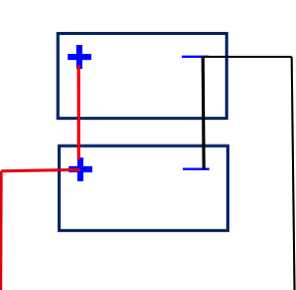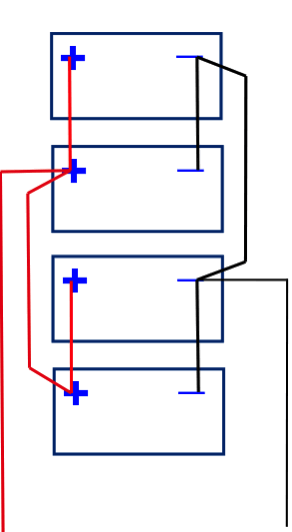Thank you. I have been making bread from the raw ingredients since April, 2003. That was when my circumstances changed sufficiently to force me to feed myself for the first time in my life. How feeble is that for a for a fifty-two year-old man? I had just started travelling to and from France to see P, although we had been pen (or rather, keyboard) pals for some months up till then, and I was beginning to get a taste for the products of the local boulangerie near his place in the Alps. I knew I could never compete with a maître boulanger, but I thought I would like something that tasted better than most of what I was buying in the UK and perhaps become a little more aware about the ingredients that were being used. Of course, I don’t know that I could ever really know that without knowing the farms where said ingredients were produced, but it makes me feel better to know I am intervening in what has until this period been a bit a mystery. I make my bread with mostly strong wholemeal flour milled about thirty miles away. I have no idea how much further away the wheat is actually grown. I add some strong white from the same factory. I think this makes the bread rise a little better. Maybe that too is just a fancy, but my observations seem to bear this out.
So, I want to come off-grid, or at least be able to have the option, and I want to keep being able to use my kitchen luxuries, both of which require 230v power. Talking this through with Solar Tim, I discovered I would need to upscale my leisure batteries and inverter. I rarely use the 1kw inverter I have at the moment, so it may seem bonkers to be planning on replacing it with a 2.5kw monster. That, though, along with having the engine running and being on the move, is what I am going to need to be able to wash my clothes when off-grid - assuming I ever get the boat moving for long enough without breaking down. To service an inverter of that size though I shall need more amps. In other words I need to more than double the leisure battery power I have been using for the past four years.
“You link leisure batteries together in parallel”, is the received wisdom. That means joining all the positives together and all the negatives together. This is what my present arrangement looked like with two batteries each rated at 110 amp hours. I never understood how my mains charger managed to find and keep both batteries charged, but I accepted that this is what was what was happening because everything kept on working. My C-Tek M300 charger has been linked with clusters of other wires to both terminals of the first battery - a monster that I can barely lift and that in turn is connected to a far more manageable second battery. Having remained unconvinced that the received wisdom tells the whole story I started doing a little research i.e. type into DuckDuckGo (my search engine of choice that doesn’t track the user like Google). After a lot of searching I discovered some YouTube videos that seemed to suggest my leisure batteries had been wrongly wired all along. That could explain why I have had to replace the second battery twice!
Watching these videos I began to see that a faulty array of connections are what killed my dead batteries. Method 1 on this link was how my two batteries have been configured all this time. I didn’t know any different and just accepted what came with the boat. My configuration, though, meant that power was mainly being drawn from and supplied to the first battery. My suspicions were correct. This is what I should have done:

However, this became more complicated when connecting up four batteries. At £100 a time I really didn’t want to finish them off and have to buy more replacements. I sat and looked at the batteries for at least a couple of hours trying to work out what was likely to be the best way of connecting them. Clearly, the instruction to connect them "in parallel” was not sufficient for such a bear of little brain as me. I tried joining the batteries’ positive terminals as follows: 1 to 2, 2 to 3 and 3 to four. I did the same thing with the negative terminals. Then I connected the red cluster of wires from the installation to the positive of battery 1 and the black cluster to the negative of battery 4. This at least followed the pattern above, or so I thought.
 |
| Behold! Spaghetti Junction. |
After a while my M300 charger started telling me that it had decided there was no charge in the battery and it was going through its reconditioning cycle. At that point I panicked and disconnected everything leaving myself without a working refrigerator, no internal lighting and no domestic water. That was a trifle inconvenient. I resorted to further web research as well as trying to make sense of the advice in a supposedly essential book I once bought on a visit to the Canal Museum near King’s Cross Station in London - "The 12v Bible For Boats". The more I read the more confused I became and I could still not find an explanation of how to link four batteries in parallel though until two discussion forums I had written to pointed me towards SmartGauge Electronics.
I had to read the linked article through at least three times and study the diagrams very carefully, before the dimmest of lights began to dawn. I began to see that the best way to connect my four batteries would probably be:

I ran out of time before leaving for France, so that will be my project on return. Of course, the challenge now is to make sure I have the correct wires to join everything up. Then I have to work out whether I have cables heavy enough and safe enough to connect to my new inverter … whatever it turns out that I buy. I have to have a conversation wth Solar Tim before he appears next week. Time is running out.
No comments:
Post a Comment